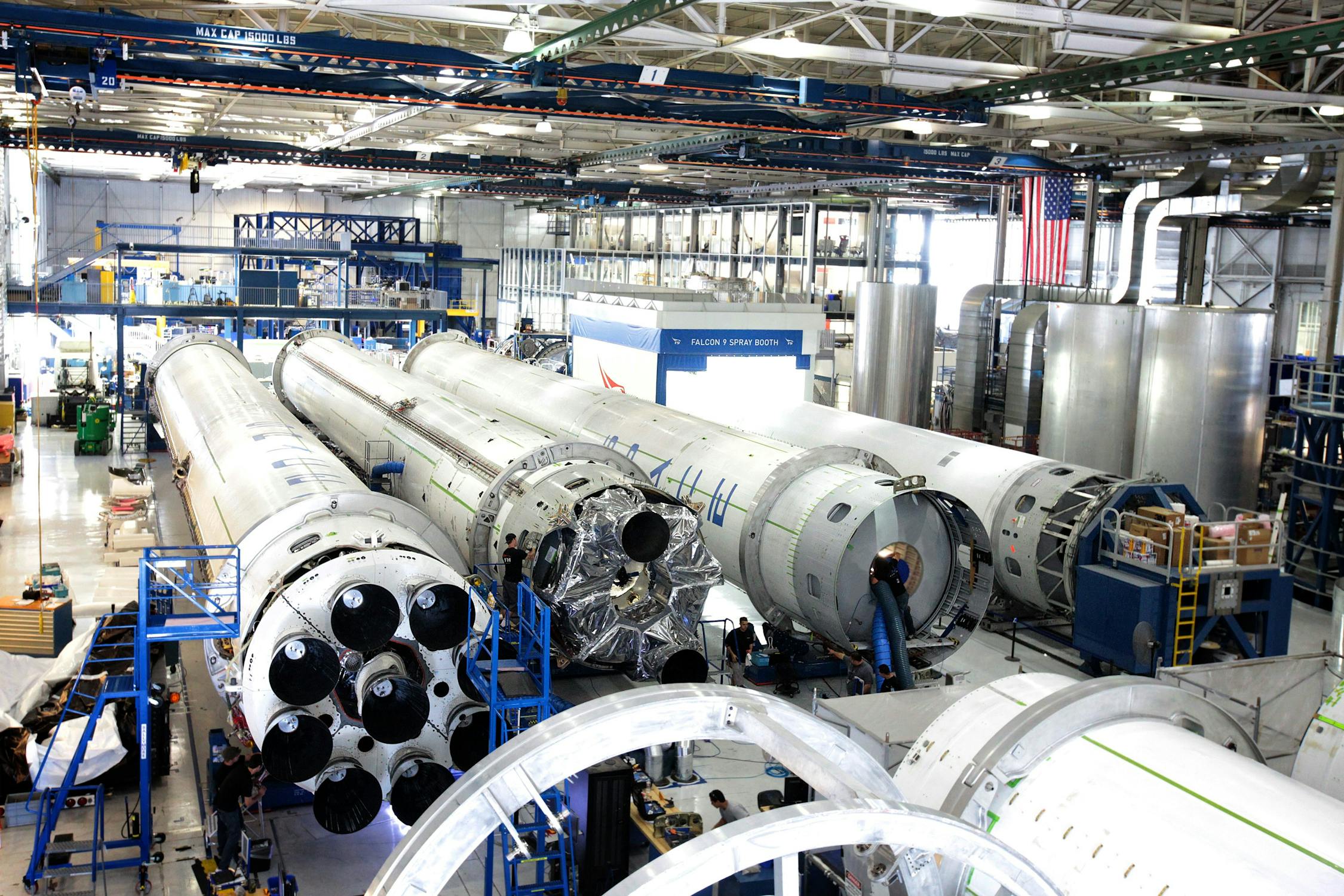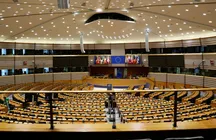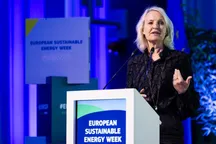 Back in March this year, the European Commission presented a new plan to stimulate and support investments in renewable hydrogen production through the European Hydrogen Bank (EHB). This initiative aims to accelerate investment and bridge the investment gap for the EU to reach its ambitious REPowerEU targets. Next November the Commission will present the first pilot auction worth 800 million euros.
Back in March this year, the European Commission presented a new plan to stimulate and support investments in renewable hydrogen production through the European Hydrogen Bank (EHB). This initiative aims to accelerate investment and bridge the investment gap for the EU to reach its ambitious REPowerEU targets. Next November the Commission will present the first pilot auction worth 800 million euros.
Not an actual financial institution, the European Hydrogen Bank is a European Commission initiative (announced in September 2022 by President Ursula von der Leyen in her State of the Union address and unveiled in detail in mid-March) to take hydrogen production in Europe from niche to scale. The challenge of the initiative is to narrow the economic gap between the higher costs of green energy, including renewable hydrogen produced by electrolysis and hydrogen produced by other processes, for early projects. The Bank will go to cover the difference between the cost of producing renewable hydrogen and the price the market is willing to pay.
In order to do this, the European executive is planning an auction system for renewable hydrogen production to support producers through a fixed price payment per kg of hydrogen produced for up to 10 years of operation. The Commission specifies that if the level of participation in the pilot auction is high, it will be followed by annual auctions and could be extended to clean products in addition to renewable hydrogen. It is expected that this allocation mechanism will enable faster deployment of innovative technologies needed for the green transition, especially in sectors that are difficult to bring down.
In September a year ago, von der Leyen spoke of a total investment of about 3 billion euros in the coming years "to build the future market" for the expanding energy that will be the economy of the future. In the 'REPowerEu' plan, the Commission set a goal of increasing domestic production of renewable hydrogen to 10 million tons and imported hydrogen to 10 million tons by 2030, with the aim of reducing dependence on Russian fossil fuels and replacing natural gas.
The European Hydrogen Bank’s first pilot auction
Funded through the European Innovation Fund (EIF), one of the world’s largest funding programmes for the demonstration of innovative low-carbon technologies, the first pilot auction announced by the European Commission for green hydrogen production will open on November 23. It will award up to 800 million euros to renewable hydrogen producers in the European Economic Area through a fixed-price premium per kg of renewable hydrogen produced in up to ten years of operation.
The auction is designed to achieve four objectives:
- Reducing the cost gap between renewable and fossil hydrogen in the EU as effectively and efficiently as possible by allocating public support. Auctions have proved to be a success in the renewable power sector, bringing down the required funding for renewable power generation through competition on price while mobilising private investments.
- Allowing for price discovery and renewable hydrogen market formation. Competitive auctions with a simple and transparent set-up reveal production costs and create valuable and comparable price points that can serve to kick-start a European hydrogen market.
- De-risking European hydrogen projects, connecting domestic renewable hydrogen supply and demand, bringing capital costs down and leveraging private capital. Given the size of the investment needed, support from the Innovation Fund should be seen as the seed funding for increased private and corporate investments.
- Reducing administrative burdens and costs thanks to short, lean, and transparent procedures.
The new auction mechanism will expand the portfolio of support mechanisms that the Innovation Fund currently provides through grants, project development assistance, and other blended financial instruments. It is also expected to enable a faster rollout of innovative technologies needed for the green transition, especially in hard-to-abate sectors.
What are the conditions of the auction?
This auction - and subsequent ones - concerns the domestic part of the European Hydrogen Bank. Only projects located within the territory of the European Economic Area (EEA) are eligible for support through this instrument.
Also some minimum technical requirements are expected:
- 5 MWe of newly installed electrolyzer capacity, to be intended for a single location, thus excluding virtual pooling of capacity.
- The tender does not stipulate a minimum price, but only a ceiling of 4.50 euros/kg of hydrogen produced as a maximum bid for the fixed premium.
- There are no limits on average annual production, however, the maximum amount of subsidy requested by each proposal must remain within one-third of the total budget available for the auction.
- Support will be performance-based: the auction will provide payments per unit of verified and certified RFNBO hydrogen production. Payments that will occur on a six-monthly basis after the project goes into operation. From the outset, the Commission had ruled out payments before entry into operation, unlike normal grants under the Innovation Fund.
Qualifying proposals will have to meet the following criteria and will then be ranked from the lowest to the highest bid price :
- Renewable electricity sourcing strategy;
- Hydrogen off-take and price hedging strategy;
- Electrolyser procurement strategy;
- Environmental permits;
- Grid connection permits;
- Completion guarantee;
- Technical, financial, and operational maturity.
Funds will be awarded in that order until the available budget is exhausted.
The closing date of the first auction is still only tentative: the Commission estimates closing the procedure on 8 February 2024.
An opportunity for European regions
On September 28 the members of the ENVE Commission (Environment, Climate Change and Energy) of the Committee of the Regions met up in Malaga. They adopted two opinions on the governance of the European Green Deal and on the European Hydrogen Bank, and had a discussion on the impact of the Green Deal in coastal areas.
The meeting focused on the Green Deal and new energy sources, notably the role of renewable hydrogen in decarbonizing various economy sectors, such as industry and transportation. The European Commission wants to stimulate and scale-up investment in the use and production of renewable hydrogen through a European Hydrogen Bank.
The rapporteur of the CoR opinion Arianna Censi, Milan city councillor in charge of mobility, said: "In our path towards climate neutrality we must combat energy and mobility poverty. Renewables are our gateway to reach energy autonomy and stop polluting our territories. In this respect, renewable hydrogen is an essential energy vector in the ecological transition. Its supply chain is no longer in an experimental phase, but only needs to be scaled-up. It will help our SMEs reduce greenhouse gas emissions and will play a key role in the mobility sector when it comes to heavy and long distances transports".
In relation to this topic recently the European Committee of the Regions has also launched (and already closed), a stakeholder consultation to gather opinions on the European Commission's proposal concerning the "European Hydrogen Bank." The consultation has closed last 4 September.
Although hydrogen is not specifically mentioned in the objectives or the key priorities of the funds, the European Regional Development Fund (ERDF) and the Cohesion Fund (CF) have specific targets of 30% and 37% respectively to support innovation and entrepreneurship in the transition to a climate neutral economy. Since REACT-EU is providing additional funds to ERDF, it has the same objectives. This means that EU countries and regions shall spend a minimum amount of their ERDF and CF allocations in these thematic areas.





